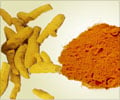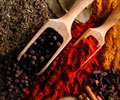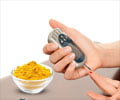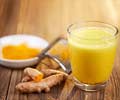Introduction
Sida cordifolia well known in India as Bala, is a weed that grows wild in wastelands and along roadsides. They are found throughout the tropical and sub-tropical plains all over India and Srilanka. The herb is an annual and grows up to 30cms. The plant though seasonal, is available throughout the year, and is especially luxuriant during the months of October to December. It belongs to the cotton family Malvaceae.
The leaves are heart shaped, one at each node. The flowers are produced at the growing regions and are yellow in color. The plant can be easily recognized with the above characteristics, and the entire plant is used in making medicine.
According to Ayurveda ‘Bala’ balances all the doshas – vata, pitta, kapha. It has more effect on vata dosha.
Valatitikta madhura pittatisaranasani
Valaviryaprada pustikapharogavisodhani.
– Rajanighantu
Rajanighantu describes this herb as extremely bitter (atitikta), yet madhura, and it is beneficial in deranged pitta. It cures diarrhea and is invigorating and nutritive. It is also efficacious in diseases caused by deranged kapha. The rejuvenating action of this herb extends to the nervous, circulatory, and urinary systems. It has a diuretic effect and is useful in urinary problems, including cystitis. Being cooling and astringent, it is used in inflammations and bleeding disorders also.
Leaves are cooked and eaten in cases of bleeding piles. Juice of the whole plant, pounded with a little water is given in doses of ¼ seer for spermatorrohea, rheumatism, and gonorrhoea. Made into paste with juice of palmyra tree, it is applied locally, in elephantiasis.
The herb has rasayana (rejuvenating) properties and assists in convalescence and debility. It is very effective as medicated oil. The popular Mahanarayana taila, Balati taila, Prabhanjana Vimardhana, Ksheera-bala taila contain this herb. The oils are used topically to massage the sore muscles, sore joints in arthritis and rheumatism, in sciatica and neuritis of legs. Another oil called Dhanvantari tailam (21 and 101 times boiled) which contains Bala along with 47 other substances, and is prepared in milk and given for all disorders produced by the derangement of 'Vata', such as emaciation, weakness, diseases of reproductive organs.
The leaves can be used as an infusion in treating fevers and delirium. The root of this plant is astringent, diuretic, and tonic, and its infusion is useful in cystitis, strangury, haematuria, bleeding piles, chronic dysentery, leucorrhoea, and gonorrhea.
The seeds contain much larger quantities of alkaloids than the leaves and roots and are used as an aphrodisiac. They are also useful in treating colic, tenesmus and gonorrhea.
There are many species of Sida that go by the name Bala chatushtya, used in ayurveda for treating the disorders of the nervous system. Bala is one among them, while others are: Sida cordata (Sida veronicifolia) is a roadside weed. It is a diffused, much branched hairy herb, with a short main stem. It can be easily distinguished mainly by its cordate/roundish leaves, with long petioles attached to slender trailing branches. The roots are sweet, sour, and astringent, and are useful in fever and arthritis. The plant is called Nagabala or Bhumibala in Sanskrit.
Sida rhombifolia
(Sida orientalis) is also a weed found in wastelands. The herb is erect, woody and easily recognized by its rhomboid lanceolate leaves. The plant is called Mahabala in Sanskrit. The stems are rich in mucilage and are employed internally as an emollient, diuretic, and as a febrifuge with pepper. The roots are bitter, cooling, and anthelmintic.
Sida acuta
(Sida carpinifolia) is a shrubby herb with many branches that have stellate hairs. Its lanceolate leaves have a round base and are sharply serrate glabrous on both sides, making it easy to identify it. It is valued as a reliever of stomachache, and is a useful remedy in chronic bowel complaints. The plant is called rajbala or brihannagabala.
Sida indica
(Abutilon indicum) is also a large herb of wastelands. Leaves are cordate, ovate, toothed, while the fruit is disc-like. The plant is useful for piles and contains asparagin and ash, containing alkaline sulphate, chlorides, magnesium phosphate and calcium carbonate. It is called Atibala in Sanskrit. The roots of all these species are regarded as cooling, astringent, tonic, bitter, febrifuge, demulcent and diuretic.
Decoction of the root of bala and ginger is given in intermittent fever attended with cold shivering fits. Root juice is also used to promote healing of wounds. Powder of the root and bark together, is given with milk and sugar for frequent micturition. Oil prepared from the decoction of root bark mixed with milk and sesame oil, finds application in diseases of the nervous system, and is very efficacious in curing facial paralysis and sciatica. (Koman: Indian Materia Medica Gazette. Aug. 1921).
Yogaratnakaram a treatise on medicine, written by Yeturi Srinivasa charyulu, describes Bala as ‘divine medicine’. He gives two preparations in detail, using Bala for treating various ailments.
Baladhyam Gritham – Yakshmani
Bala swadhamstra brihati kalasi dhavani sthira
Nimbhaha parpatakam mustham trayamanam dhuralaba
Krithva kashayam peshyardham dhadya dhamalakim satim
Dhrksha pushkaramulastcha medha mamalakanicha
Gritham payascha tharsidham sarpi jawaraharam param
Kshaya kasa prasamanam sirah parswa rujapaham
(Yogaratnakaram – madhyama kandam-page 316-317)
Bala roots, fruits of Gokshura (Hygrophila spinosa) & Kantakari (Solanum xanthocarpum), root of Salaparani (Desmodium gangeticum), Nimbha bark (Margosa tree), Parpatakam (Oldenlandia corymbosa), Mushtha (Indian cyperus), Kalu kranuga, and Athma guptha (Mucuna pruriens), taken in equal quantities is boiled in water (four parts), and made into a decoction that is reduced to one fourth of its original quantity and filtered. To the filtrate, ¼th quantity of the paste of bhumyamalaki (Phyllanthus niruri), kachoram (Curcuma zedoaria), draksha (Vitis vinifera), pushkara root (Costus speciosus), amla (Emblica officinalis) and medha (Gymnema aurantiacum) is added. To this, milk is added (four parts) and boiled. This gritha is called Baladhyam gritham, and is given for the following diseases: fever, T.B, bronchitis, headache, and migraine. Chakrapani Datta recommended that this gritha can be consumed by adding two parts of milk to it.
Baladhyam Gritham – urakshathe
Gritham bala nagabalrju nambusiddham sayasti madhukalka padam
Hridroga shula kshatha raktha pitta kasa nila samsama yathyu dhirnan
(Yogaratnakaram – madhyama kanda – page 346-347)
Root of Bala, Nagabala and bark of Achuka (Morinda citrifolia) is mixed in equal quantities, and four parts of water are added to make a decoction. To four parts of the decoction, one part of yastimadhu paste (Glycyrrhiza glabra) is added and boiled into gritham. This cures Heart diseases, colic, bronchitis and vata-pitta doshas.
Bala has been in use for over 2000 years in treating bronchial asthma, cold and cough, chills, aching joints and bones. The alkaloid ephedrine, which was so far observed in different varieties of Ephedra sp., has been identified in this plant which is responsible for treating asthma. The presence of this sympathomimetic substance also explains its use as a cardiac stimulant in the old Hindu medicine.
In the Konkan, the leaves with other cooling leaves are applied in opthalmia. The leaves, mixed with rice, are given to alleviate the bloody flux. The Thongas of Portugal and the East Africans, use this plant as a remedy to treat children’s ailments.
In Cambodia the roots are considered as diuretic and depurative; they are given in the treatment of gonorrhea and ringworm.









